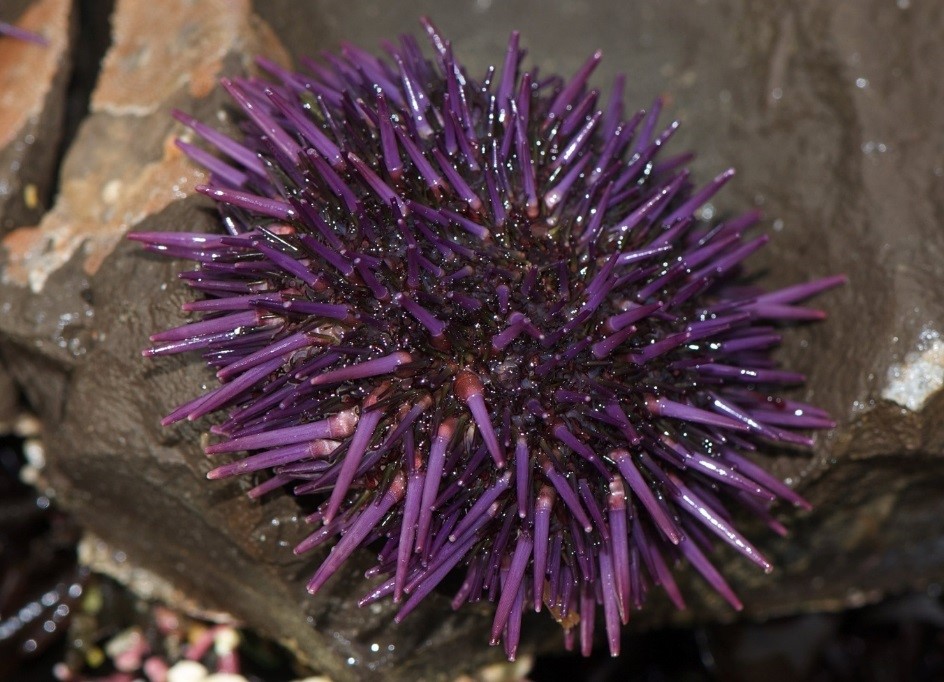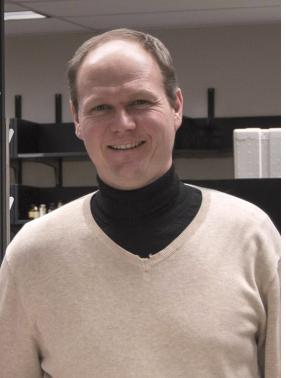You Can’t Make a Sea Urchin Without Breaking Some Cells
By Michael Lim
March 21, 2018

Growing up is an incredibly complex biological process, especially for animals such as purple sea urchins which must break down and reform their bodies as they metamorphose into adults. It’s a remarkable transformation that requires multiple processes to be orchestrated, including cell differentiation, growth, and, last but not least, cell death. A recent breakthrough by Prof. Andreas Heyland’s lab in the Department of Integrative Biology has uncovered that histamine signaling appears to be a major regulator of cell death.
Many animals have evolved the ability to metamorphose. Caterpillars turning into butterflies, and tadpoles into frogs, are some of the best known examples. In fact, over 90% of marine invertebrate groups, such as sea urchins, undergo metamorphic life cycles, abandoning their larval bodies as they settle onto the ocean floor. Larval structures are, in part, removed by a process called programmed cell death or apoptosis. If left unchecked, rampant cell death can be lethal to organisms, so the process must be tightly controlled. This is where histamine - commonly associated with immune responses, allergic reactions, and nervous system signaling - comes into play.
“There has been surprisingly little investigation into the link between histamine and programmed cell death,” said Heyland. “But it appears that in sea urchins, histamine may be a major and essential block for apoptosis.”

Previous research, including work from the Heyland lab, has hinted at a role for histamine in metamorphosis. An earlier study found that when larval sea urchins were exposed to histamine, fewer underwent metamorphosis. However, when larval sea urchins were given a compound that blocked histamine receptors, metamorphosis proceeded.
Heyland and MSc student Keegan Lutek suspected that this meant that histamine needed to bind to sea urchin histamine receptors (suHRs) to inhibit apoptosis, and consequently, the
metamorphic transition of larval sea urchins during settlement. To test this, the researchers took a two-pronged approach. First, they measured the expression of the gene that produces suH1R, one of at least three known sea urchin histamine receptors. As expected, the team found that after the larvae had settled and began to metamorphose, suH1R expression decreased significantly, indicating that the brake on programmed cell death had been released.
Next, the team attempted to identify what happens when production of the suH1R receptor protein is inhibited. In these knock-down experiments, larvae with lower levels of suH1R had high levels of apoptosis. Interestingly, larvae with inhibited suH1R expression still responded to histamine – apoptosis levels were reduced. According to Heyland’s team, this suggests that histamine may bind to other receptors in sea urchins, or affect apoptosis by some other mechanism.
What is particularly exciting about this study is that histamine is present in most organisms, including plants, animals, and even bacteria. While the role of histamine receptor mediated apoptosis has only been studied in humans and sea urchins, it provides an interesting avenue for future studies. Furthermore, it provides a possible avenue for the treatment of human diseases such as cancer; for example, inducing apoptosis could help kill cancer cells. For now, the roles of different histamine receptors on apoptosis both within and across species (especially those which undergo metamorphosis), is something that Heyland is excited for researchers to pursue.
“It’s fascinating that this mechanism was discovered in a sea urchin,” said Heyland. “It’s possible that this [apoptosis control] mechanism might be very widespread.”
Other contributors to the study include Rasmeet Singh Dhaliwal and Prof. Terence J. Van Raay from the University of Guelph, and Prof. Gary M. Wessel from Brown University. Funding for this research came from the Natural Sciences and Engineering Research Council.
Read the full article in Scientific Reports.
Read about other CBS Research Highlights.